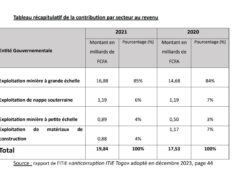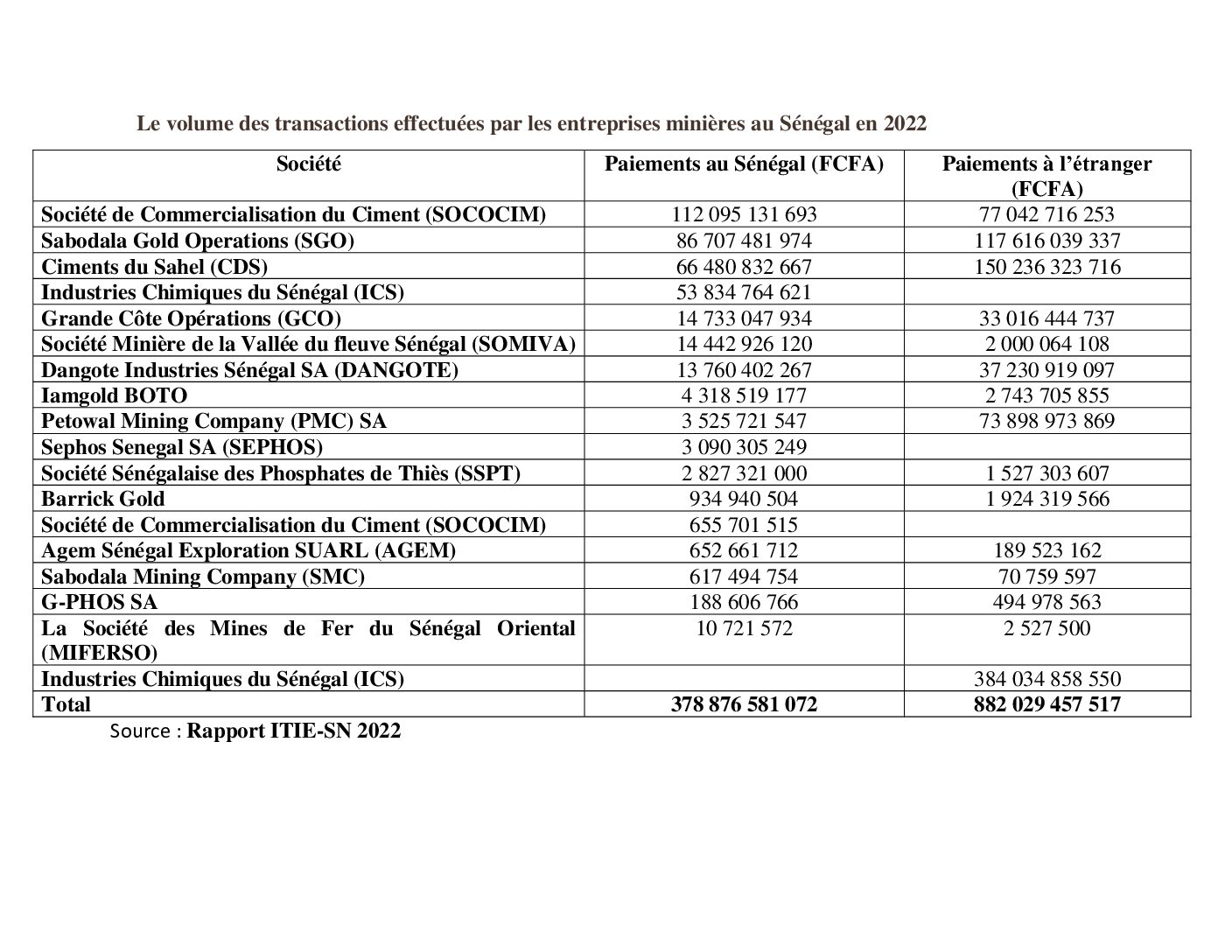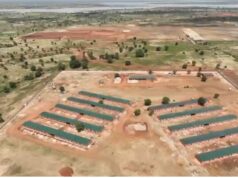During the year 2022, the volume of quarried substances is estimated at nearly 1.5 million cubic metres, reflecting a significant increase compared with previous years. Revenues from production have also seen significant growth, reaching 971 million CFA francs in 2022, compared with 538 million in 2019. However, challenges remain. To meet these challenges and boost quarrying, the General Careers Department (Direction Générale des Carrières – DGC) is working to ensure that quarries are used sustainably and responsibly, while maximising their contribution to Burkina Faso’s economic development. Patoingnimi Arsène Tiendrébeogo talks about the quarry sector during the West African Mining Week (Semaine des activités minières d’Afrique de l’Ouest – SAMAO).
Could you give us a brief overview of the General Careers Department (DGC)
The Directorate-General for Quarries (Direction générale des carrières – DGC) is a technical structure within the Ministry of Mines, responsible for designing, developing, coordinating and implementing the Ministry’s quarrying policy. It comprises three technical departments: the Department for Monitoring Quarry Regulations and Production (Direction du suivi de la réglementation et de la production des carrières – DSRPC), the Department for the Promotion of Quarry Substances (Direction de la promotion des substances de carrières – DPSC) and the Department for the Rehabilitation of Quarry Sites (Direction de la réhabilitation des sites de carrières – DRSC).

What are the DGC’s key missions?
The DGC is responsible for monitoring and controlling quarry research and exploitation activities, monitoring the construction, operation and closure of quarry sites, ensuring compliance with regulations on the use of explosives for civil use in quarries and promoting the mechanisation of artisanal quarrying. It is responsible for promoting the processing and recovery of quarry materials, ensuring the payment of proportional royalties and the local development mining fund relating to the exploitation of quarry materials, providing technical advice on applications for authorisations to exploit quarry materials and ensuring the protection, safeguarding and restoration of the environment at quarry sites in collaboration with the relevant ministries.
What is a quarry?
The Mining Code defines a quarry as a place from which mineral substances such as industrial minerals, industrial rock, ornamental stone and building materials are extracted.
Can you clarify the concepts of quarry substance and useful substance?
The following are considered as quarry substances: deposits of building materials (sand, laterite), paving materials (sandstone) and viability materials, soil improvers (dolomitic limestone) as well as materials used in the ceramics industry (clay) and other similar substances, with the exception of phosphates, nitrates, alkaline salts and other salts associated with the same deposits and peat bogs. The Mining Code does not define useful substances. The concept of useful substances was introduced into mining administration through World Bank-funded projects. According to their definition, useful substances are similar to quarry substances.
What is the difference between mining substances and quarrying substances?
The fundamental difference lies in the market value of the products, with mining substances having a high economic value.
What types of quarries are there in Burkina?
There are three (03) types of quarries in Burkina Faso: -industrial quarries using heavy machinery and modern production equipment; -semi-mechanised quarries using some mechanical production equipment; -artisanal quarries using rudimentary production equipment (picks, shovels, daba, hoe, etc.).
What are the main types of material extracted from quarries in Burkina Faso and what role do they play in the country’s economic and infrastructure development?
These include granite and similar materials, mainly used to produce aggregates for the building and public works industry; dolomitic limestone, used in the cement industry (as an additive), in agriculture (as a fertiliser) and in the mining industry (for lime); and tuff, used as an additive in the cement industry. There are also basalts, used in the production of aggregates and as an additive in cement works, sand, used in construction and public works, and loose laterite for road works and indurated laterite for the production of cut laterite bricks used in building construction.

What is the current state of quarrying in Burkina Faso?
To date, 73 permanent quarrying permits have been issued by the mining administration, including 71 industrial permits. These include 50 for granite and similar materials, 14 for dolomitic limestone, 04 for tuff, 02 for basalt and 01 for sand. There is also one (01) semi-mechanised sand mining licence and one (01) artisanal granite mining licence. The cumulative production of all industrially exploited quarry substances is: 400,626 m³ in 2017 to 1,455,861 m³ in 2022, an increase of around 1,000,000 m³ in 6 years. Revenue from industrial quarry production in the form of production royalties and the LDMF will rise from 537,825,718 FCFA in 2019 to 971,440,465 FCFA in 2022, an increase of 433,614,747 FCFA. What contribution do quarries make to employment in Burkina Faso? In 2022, industrial quarries generated around one thousand two hundred (1200) direct jobs.
What are the requirements for obtaining a quarrying permit in Burkina Faso?
These authorisations are issued to any natural or legal person who applies to the mining administration in accordance with the regulations. They may be temporary or permanent. What is the procedure for obtaining a quarrying permit in Burkina Faso? The procedure for obtaining a permit is set out in Decree 2017-0036/ PRES/PM/MEMC/MATDSI/MINEFID/MEEVCC/MCIA on the Management of Mining Titles and Permits. The application file is submitted to the General Directorate of the Mining Cadastre.
What are the taxes relating to quarry substances in Burkina Faso?
The Mining Code provides for two types of tax to be levied on quarrying operations: fixed fees, consisting of granting, renewal and transfer fees, and contributions to funds for rehabilitating and securing mining sites; and proportional royalties, consisting of surface taxes and production taxes. In addition to these various taxes, there is the contribution to the Local Development Mining Funds (LDMF).
What is the validity of a quarrying permit?
Permanent industrial quarrying permits are valid for five (05) years and renewable for three (03) years. Semi-mechanised and artisanal mining permits are valid for two (2) years and are renewable for the same period. Temporary quarrying permits are valid for one year and are non-renewable.
What advantages does the Ministry of Mines and Quarries offer investors?
Exemptions (tax and customs benefits) are granted to investors on a certain number of equipment items for the quarry installation phase.
What are the penalties for investors in the quarrying sector who breach the Mining Code and its implementing regulations?
The penalties for breaches of the regulations are: formal notice, withdrawal of authorisation, fines and imprisonment. What could you say about artisanal quarrying in Burkina?
What could you say about artisanal quarrying in Burkina?
Artisanal quarrying occupies a large part of Burkina Faso’s urban and rural population. However, it is informal and therefore beyond the control of the mining administration. It could make a significant contribution to the state budget if the mining administration were to succeed in formalising it.
How do you work with artisanal operators?
Every year, the DGC runs awareness-raising campaigns for artisanal operators on the Mining Code, its implementing regulations and environmental protection. The aim of these awareness-raising campaigns is to encourage them to comply with current mining regulations governing artisanal quarrying.
What is the current state of artisanal quarrying?
Despite the importance of artisanal mining, only one application has been registered with the Mining Registry. To date, only one artisanal mining permit has been issued by the mining administration. However, thanks to the Project to develop and strengthen artisanal mining of development minerals (Projet de Valorisation et de Renforcement de l’Exploitation Artisanale des Mineraux de Développement – PVREAMD), co-funded by the ACP-EU programme and the Burkinabe state, momentum is building for the formalisation of many artisanal miners.
How to go from an artisanal operation to an industrial one?
To move from artisanal mining to industrial mining, the applicant must submit a request to the mining authorities in accordance with current mining regulations.
Is there clear investor interest in the sector, as there is in gold?
Investors are interested in the quarrying sector. To date, there are 71 valid operating licences. Every year, at least five applications are registered with the Mining Registry.
Is there any reason to worry about the fact that quarries are natural resources and therefore exhaustible?
There is no need to worry, as Burkina Faso has a large and varied potential for quarrying substances throughout the country. The DGC is working to ensure that these resources are exploited sustainably.
What are the challenges facing the careers sector in Burkina?
The main challenge remains the promotion and recovery of quarry materials in our country. Specifically, this involves controlling the declaration of volumes extracted by quarry promoters, getting quarry companies to contribute effectively to funds for rehabilitating and closing down quarries, getting non-formal artisanal operators to formalise in order to derive added value for the State budget, and organising artisanal operators into cooperatives and guiding them towards semi-mechanisation. It is also a question of creating conditions for better valorisation and promotion of quarry substances and promoting best environmental practices.
As an expert in the field, what mechanisms can be put in place to boost quarrying in order to increase revenue for the national economy?
These objectives will be achieved by promoting the exploitation of quarry substances through the organisation of quarry promotion days, diversifying the production of quarry substances (ornamental stone, tiles, ceramics, terracotta bricks, etc.), recovering all the revenue generated by quarry production, strengthening the monitoring and control of quarry exploitation activities, and organising and formalising non-formal artisanal exploitation in order to capture the added value.
What are the statistics on quarrying?
In 2022, the DGC recorded thirty-five (35) quarrying companies in production.
In the first semester of 2023, the DGC registered thirty-one (31) quarrying companies in production.
This article was excerpted from the magazine Spécial #SAMAO2023
Download the entire magazine at this link: https://samao.org/magazine-samao-2023/?fbclid=IwAR1pfgfKbZMz2QBpOlu3fnnWzgAZE7ZOT4E_FZenV3YFXrn81cMaiRQWNas
#Mines_Actu_Burkina










